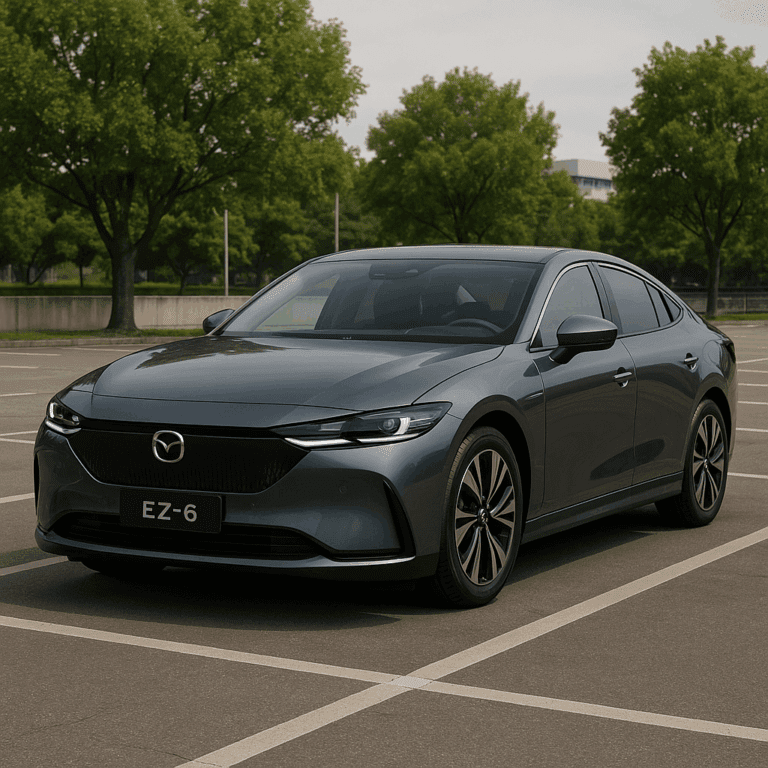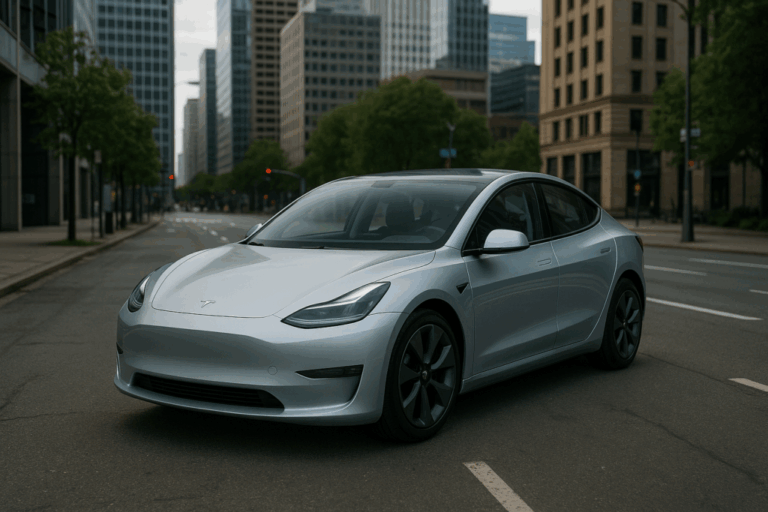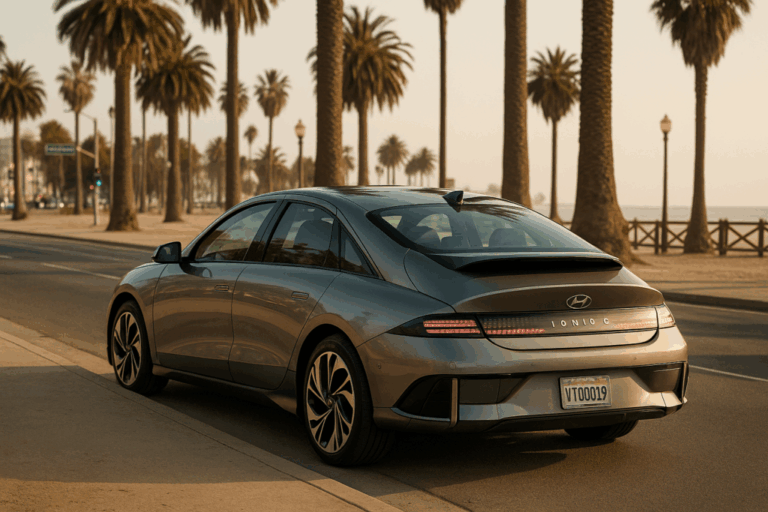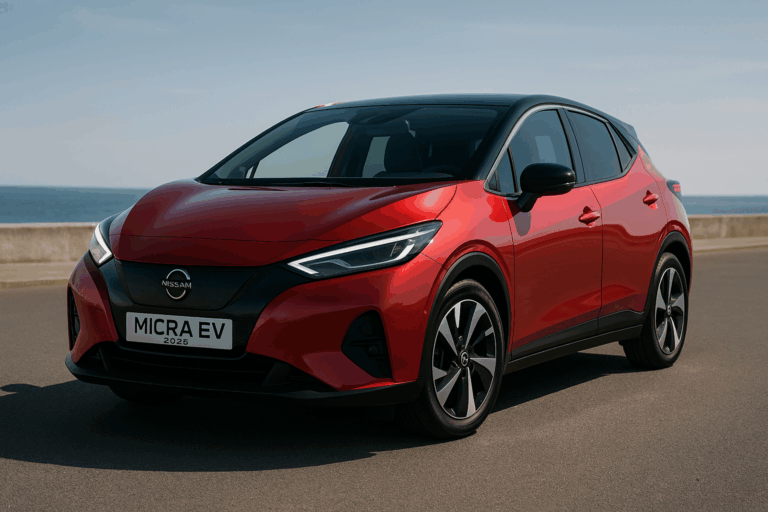Toyota’s New Electric Makeover: 2025 Review
Toyota has finally jumped into the EV game with its first-ever mass-market battery-electric vehicle (BEV) – the bZ4X (pronounced “beyond Zed four X”). After years of hybrids, Toyota is embracing pure electric drive, but with a twist: it’s dressing up its new EVs to catch Gen Z’s eye. Think sleek, modern designs, high-tech interiors and even playful marketing – not the cautious image we once associated with Toyota. The bZ4X (soon to be simply called “bZ” for 2026 models) is just the start. Toyota has a raft of new EVs on the way for 2025–2026, and each reflects a shift toward younger, trend-savvy buyers. Below we break down the bZ4X, tease the next models, and compare how Toyota’s EV approach stacks up against Nissan and Honda.
The bZ4X: Toyota’s First Mass-Market EV
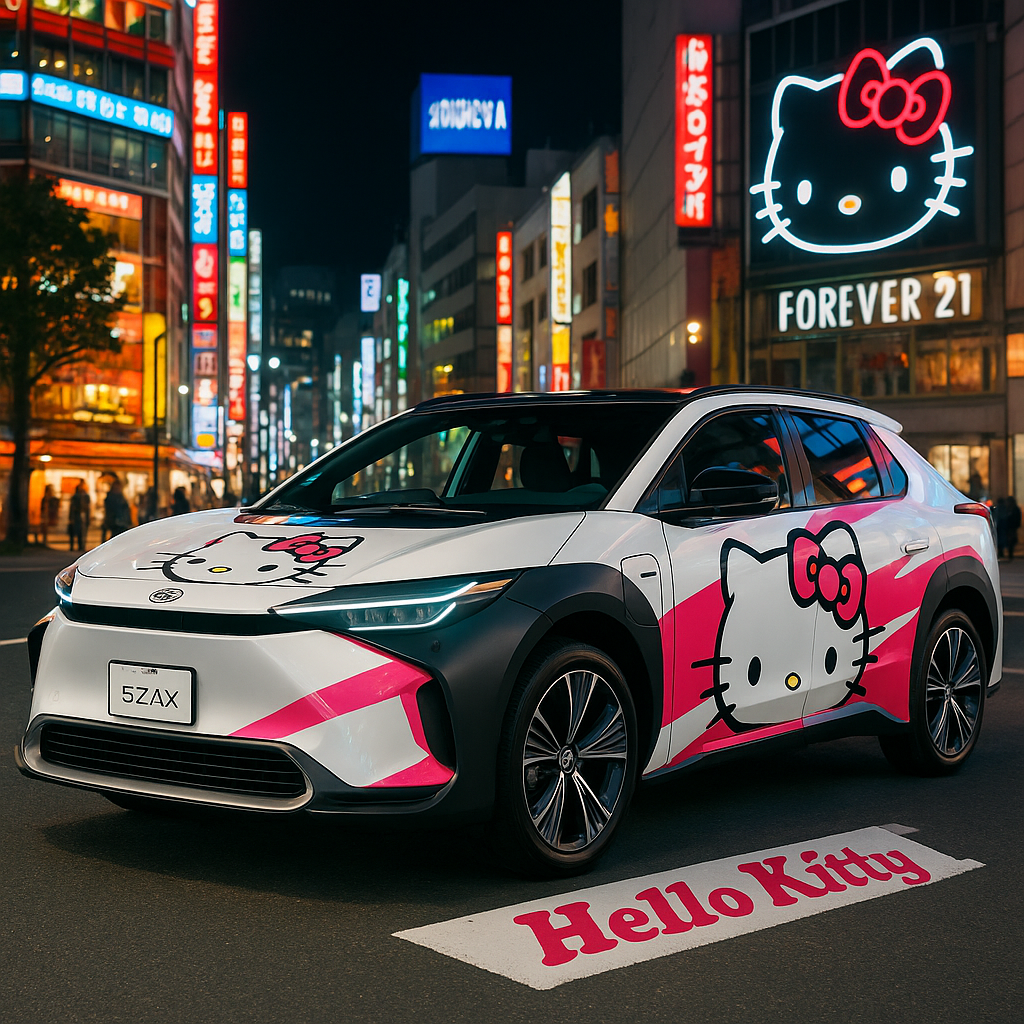
Toyota’s bZ4X is a compact SUV built on a new BEV platform (e-TNGA). Officially, Toyota says the design is guided by the theme “Hi-Tech and Emotion,” blending “an advanced BEV feel with the inherent beauty of cars”. In practice, the bZ4X looks modern yet friendly: it has smooth, aerodynamic corners and a distinctive “hammerhead shark” shape across the hood and headlights. The overall effect is sleek and powerful, but with a surprisingly approachable face.
Inside, Toyota loaded the bZ4X with young-driver-friendly tech. A slim new dashboard centers a 14-inch touchscreen multimedia system. For personalization, the cabin features 64-color ambient lighting, letting you pick a mood (imagine cruising with soft lavender glow). Wireless charging pads (even dual pads up front) and a full digital instrument cluster give it a gadgety vibe. You can lock or unlock the car with your phone via a digital key and even use the bZ4X as a Wi-Fi hotspot for friends on board. All the connectivity and over-the-air updates feel like what a tech-obsessed Gen Z driver would expect.
Under the skin, the bZ4X isn’t about breakneck performance – Toyota is playing to practicality. The 2024 bZ4X (FWD) targets about 252 miles of range (EPA) on a full charge. In 2025 and beyond, Toyota will beef this up: the new 74.7-kWh battery raises the range to around 314 miles for the FWD+ model. At the same time, power jumps by up to 50% (AWD models rise to 338 hp) thanks to upgraded eAxles. The 2026 bZ (new name for the bZ4X) also adopts Tesla’s charging standard (NACS), meaning it can use Tesla Superchargers. Under ideal conditions you can go from 10% to 80% battery in roughly 30 minutes on fast DC charging – practical for road trips.
Toyota even made the 2025 model cheaper and cooler-looking to entice buyers. It cut the bZ4X’s price by as much as $6,000, and added a new Nightshade Edition with blacked-out trim and red-stitched seats to look more aggressive. In short, Toyota’s first EV is packed with features and a modern aesthetic that wouldn’t have seemed possible from Toyota just a few years ago.
Tweaking Design and Brand Vibes for Youth
What’s particularly interesting is how Toyota is tweaking its brand image for a younger crowd. Gen Z in Japan loves things that are “kawaii” (cute/playful) and techy. Toyota isn’t slapping Hello Kitty decals on its EVs, but it is dialing up the fun factor compared to its traditionally staid style. For example, the new bZ4X (and its 2026 bZ makeover) emphasizes sleek, short overhangs and smooth surfaces that feel more futuristic. Available trim colors and two-tone paint options let owners stand out. The Nightshade black-and-red edition nods to the edgy styling favored by many young drivers. And the ambient lighting lets people literally set a “chill pink” or “energetic blue” vibe in their car at night.
Toyota’s marketing is taking a lighter tone too. The bZ4X ad campaign in late 2024 was even called “A Secret Worth Sharing” – an acknowledgment that many consumers might still be surprised Toyota makes an EV. The commercials themselves are playful: one spot shows a monster-crab takeover and a heroic bZ4X rescue; another is a mini-romcom where love finds a way through EV preference. It’s almost anime-like storytelling. The message is clear: Toyota is consciously showing younger audiences that it gets cool design and pop culture (a far cry from the grey suits of old).
On the tech side, Toyota is also moving away from heavy legacy car-features in favor of digital ease – something Gen Z expects. The bZ4X’s steer-by-wire steering wheel (an optional first for Toyota) and huge touchscreen echo the simplicity of a smartphone interface. Toyota lets your phone act as a key and even keep track of who used the car (sharing with friends is swipe-simple). All of this feels like Toyota is saying: “Yes, we’re part of your online, app-driven life.” That kind of brand messaging – seamless tech, customizable style, and a bit of youth culture attitude – is new for Toyota.
Looking Ahead: 2025–2026 EV Models

Toyota isn’t stopping at the bZ4X. The next couple of years bring several new EVs, many already unveiled or teased by official sources:
- 2026 Toyota bZ (formerly bZ4X): A refreshed bZ4X for 2026 gains the name change to simply “bZ” and major upgrades. It gets the bigger battery (74.7 kWh) for ~314 miles range and higher output (338 hp AWD). The exterior and interior receive subtle styling tweaks: slimmer hammerhead front fascia, color-matched cladding, a larger 14″ screen, and soft-touch materials for a premium feel. Expect this improved bZ to hit showrooms in late 2025 for the 2026 model year.
- bZ Woodland / bZ4X Touring (2026): In May 2025 Toyota revealed the bZ Woodland, a new crossover EV for North America. This is essentially a beefier sibling to the bZ4X. Importantly for Japan, the Woodland will be sold at home as the “bZ4X Touring” around spring 2026. It features a 74.7-kWh battery (around 260 miles in AWD) and is tuned for both “driving performance and spaciousness.” In other words, it looks like a family-friendly EV SUV that’s still fun to drive. (Toyota also hinted the Woodland/Touring will get fast-charging Teslaship compatibility and other eco tweaks.)
- 2026 Toyota C-HR BEV: Toyota’s compact C-HR crossover goes electric. Debuted in May 2025, the 2026 C-HR BEV is a coupe-like compact SUV with 338 hp AWD, doing 0–60 in ~5 seconds – quite sporty for the class. It uses the 74.7-kWh battery too, with about 290 miles range. The design is edgy, with flowing lines and a wide stance that Toyota describes as an “expression of the fun-to-drive” character of EVs. Inside it gets many of the same tech features (14″ screen, wireless chargers, custom lighting). The C-HR EV should arrive in dealerships in 2026.
- Coupe-Style EV (2025): Toyota’s Europe team teased another new BEV for March 2025 – a sleek coupe-styled EV that somehow offers a lot of interior space. The official hints call it “stylish and comfortable,” with a dramatic swept roof and emotional design. Details are scarce, but it shows Toyota is experimenting beyond SUVs and trying sexy shapes again (something Gen Z car buffs will love). This unnamed model is slated for unveiling on March 12, 2025.
In total, Toyota’s EV lineup is set to explode in the next few years. A recent report said Toyota plans 15 electric models globally by 2027 (up from just five today). For Japan, that means more choices like possibly small city EVs, minivans, and maybe even a key-car EV brand (Toyota has already created a new “Pixis” mini-car division). The bottom line: Toyota is rushing out new EVs in every shape and size to keep pace with global trends.
Japanese Rivals: Nissan and Honda
Of course, Toyota isn’t alone in this race. Nissan and Honda (and other Japanese automakers) have been pushing EVs on their own terms.
- Nissan: Nissan was actually the first Japanese company to mass-market an EV (the Leaf, launched in 2010). Since then Nissan has gained experience and is now rolling out its next-gen EVs. In March 2025, Nissan announced a new Leaf: the third generation will be a lifted crossover form, using the same “CMF EV” platform as the Ariya SUV. It even adds Tesla-compatible NACS charging (so Leaf drivers can use Superchargers). The goal is much longer range than the old Leaf. Nissan also has the Ariya EV SUV already on sale, and plans a new EV Juke by 2026 – a bold, coupe-ish subcompact EV with advanced connectivity. In short, Nissan is courting young buyers with edgy designs and the latest tech (right down to letting drivers tap Tesla’s charger network).
- Honda: Honda was a bit behind, but it’s catching up with futuristic concepts. At CES 2025 Honda revealed its “0 Series” prototypes: a low-slung 0 Saloon (sedan) and a tall 0 SUV. These will go into production in 2026, and they look like 1980s supercars and sleek crossovers, respectively. Honda is aiming for eye-catching designs (think wedge shapes and sporty profiles). They’ll also be packed with tech. In other words, Honda is betting on style and performance to attract young EV buyers. (Note: Honda is also partnering with GM on other EV projects, but the 0 Series is its own brand vision.)
Compared to Nissan and Honda, Toyota had been slower with pure EVs (leaning on hybrids and fuel cells). But now Toyota’s starting lineup – the bZ4X/bZ, upcoming C-HR EV, Woodland/Touring, etc. – finally shows a confident shift. Toyota is going toe-to-toe in range and tech (bZ’s 300+ mile range and Tesla charging is competitive) and is adding design flair. The other Japanese automakers have an early-mover advantage in some segments (like Nissan with the Leaf), but Toyota’s massive product blitz (15 models by 2027) means the next few years in Japan will see all three brands vying to win over Gen Z drivers.
Conclusion
For young, trend-focused drivers in Japan, Toyota’s EV entrance is exciting news. The bZ4X shows Toyota can make an electric car that looks cutting-edge and comes loaded with connectivity and cool features. Toyota’s marketing is finally fun and quirky. And the roadmap – from a sporty C-HR EV to a chic coupe EV – suggests Toyota isn’t just re-badging old ideas, but rethinking how a Toyota can appeal to a tech-savvy generation. By 2026 the lineup will include multiple new models and many more subtle design cues to attract youth (ambient lights, customizable apps, that sweet hammerhead front end).
All that said, Toyota is not late to the party compared to the likes of Nissan Leaf and Honda’s new concepts. Those rivals are already proving themselves in performance and style. But Toyota has one advantage: brand power and volume. It’s pushing hard to catch up – slashing prices on the bZ4X and tripling its EV range by 2027. In doing so, Toyota is injecting “kawaii” friendliness and Gen Z-style flair into its brand. The end result is that driving a new Toyota EV might finally feel like the cool, connected experience that young people crave – whether you’re cruising under neon city lights or charging up for the next adventure.
